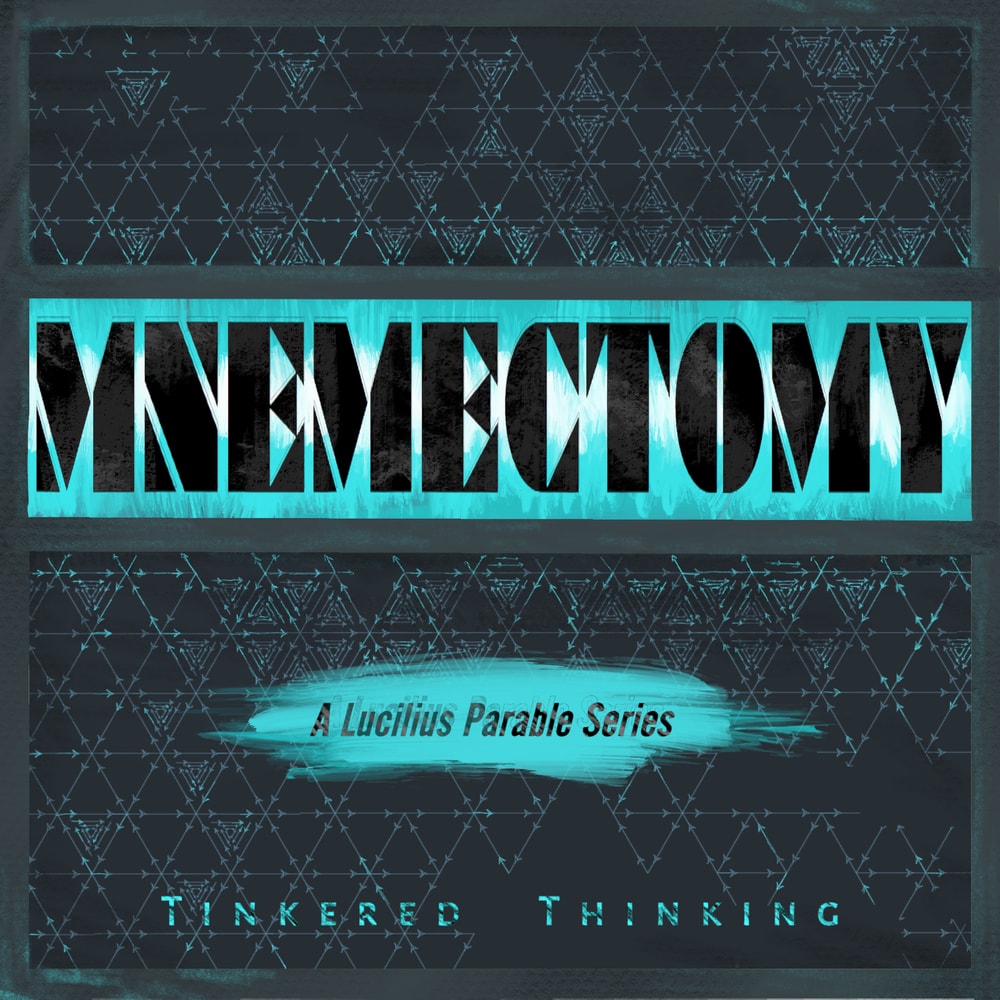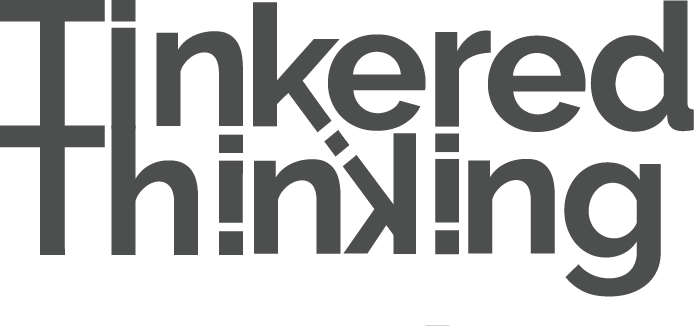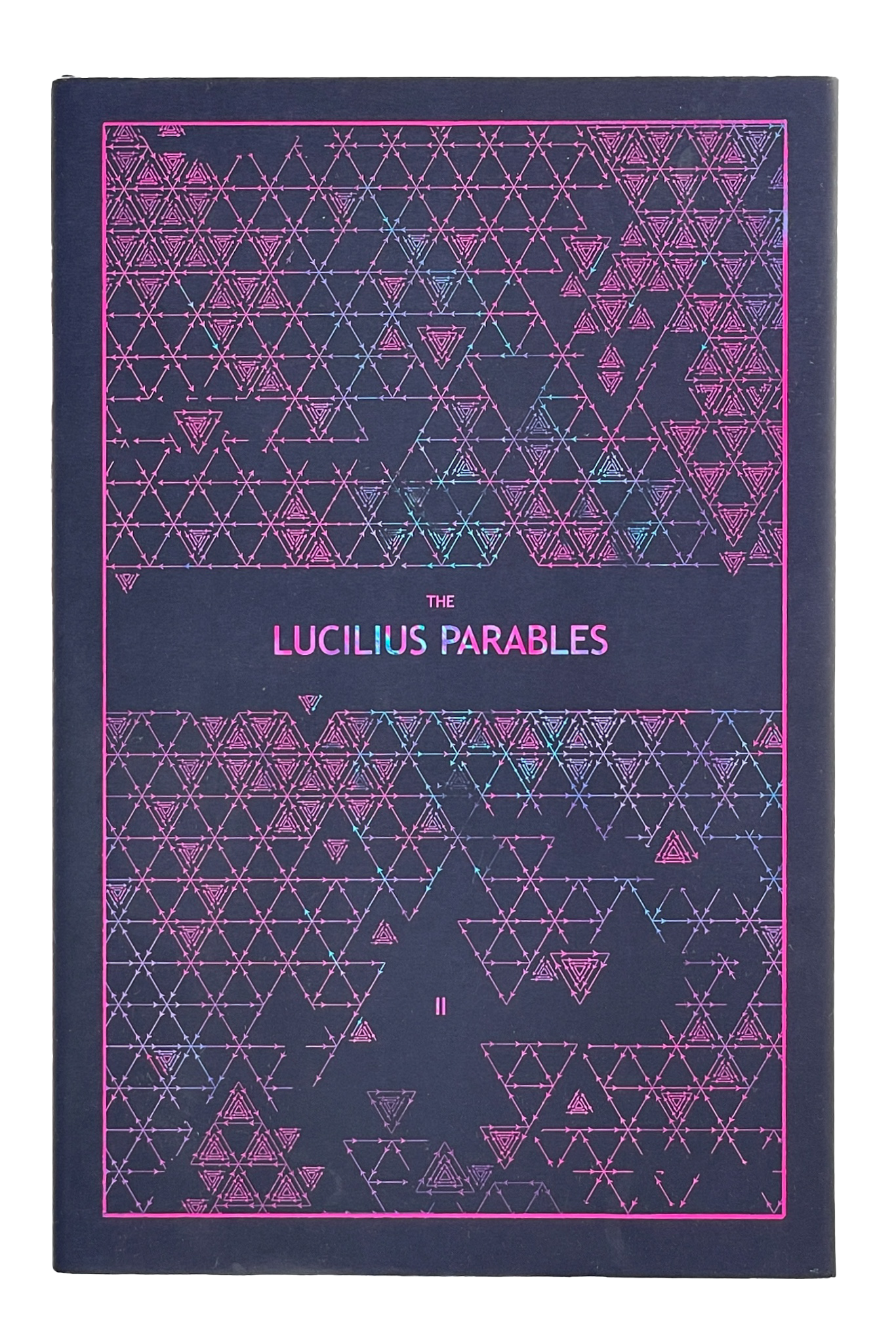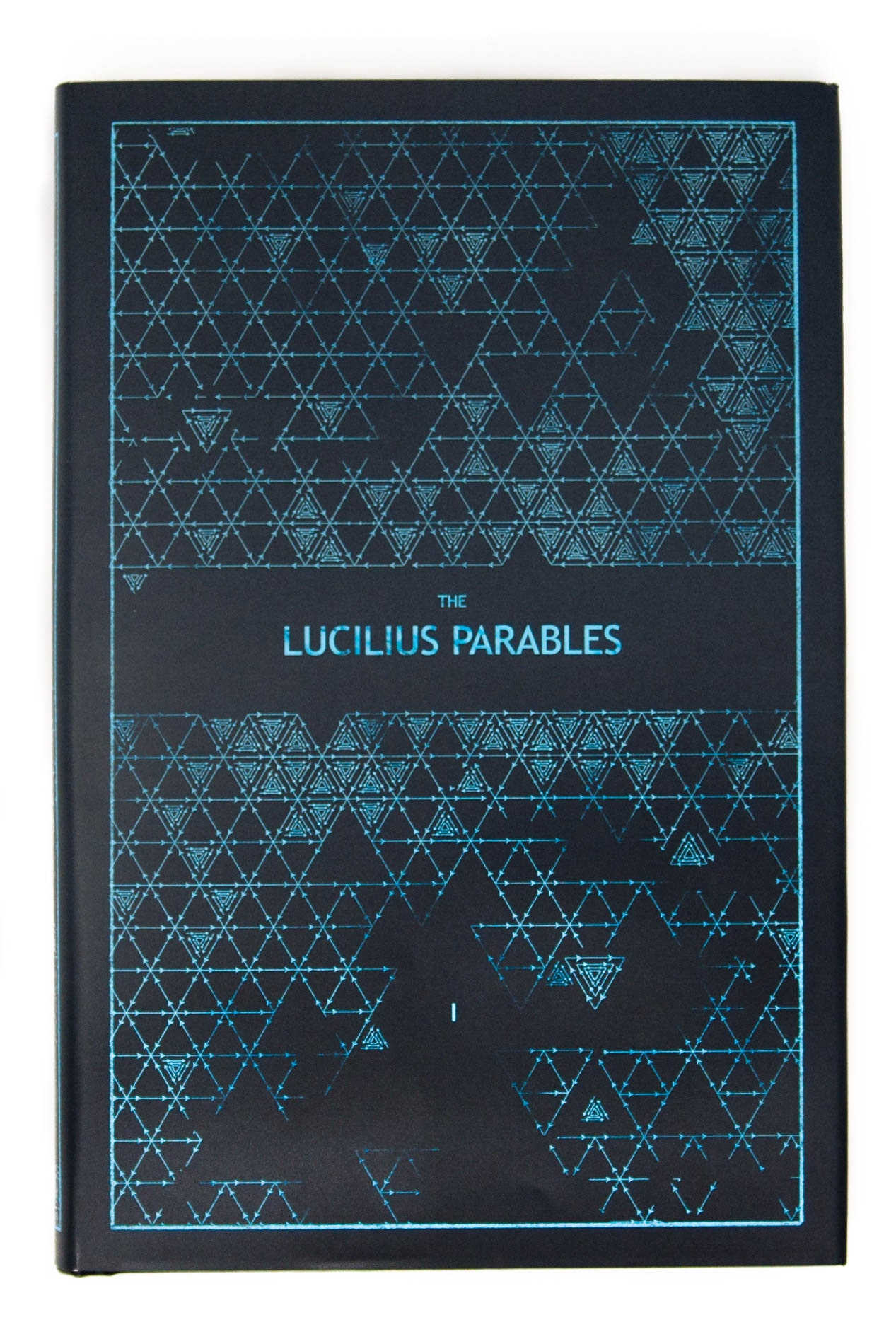Daily, snackable writings to spur changes in thinking.
Building a blueprint for a better brain by tinkering with the code.
subscribe
rss Feeds
SPIN CHESS
A Chess app from Tinkered Thinking featuring a variant of chess that bridges all skill levels!
REPAUSE
A meditation app is forthcoming. Stay Tuned.
THEORY OR EXAMPLE?
November 29th, 2019
What comes about first? And which is more powerful?
Our theory, or an example of that theory?
It can go both ways. We can come up with a theory and then look for examples where the theory holds true, or we can draw out a theory from examples.
The directions of deduction in these two cases are not equal. Our choice about what to do is better off drawn from examples. But this can be quite dangerous. As we look for examples about what to do, we naturally look around at what everyone else is doing and thinking. We can then fall into the trap of following the most common example, and if this becomes our course of action, then we’re no better than a sheep, and at worst we might be a buffalo in the middle of a herd that is headed straight off a cliff.
Naturally the most common thing has tons of examples by default. Go to school, get a job. Get promoted over and over or go back to school to get a better job. This is a common string of examples that people follow. The strange thing about this prevalent example is that the end result is not only highly predictable, but the probability of the most widely followed path leading to a radically better outcome is going to be rare in proportion to the widespread nature of the mainstream example.
We can turn our attention to examples of paths less followed. Looking at people who have traced out tangents from the herd might make it seem as though they were simultaneously lucky and courageous and the combination simply worked out.
But this perspective is too reliant on the example in isolation, and fails to incorporate any kind of theory that puts these tangents from the herd into a framework of understanding.
For example, after reading enough biographies of innovative and original people, we might come to discover that their obvious success was preceded by constant failure and setback. If we find this to be a trend among such people, than an assessment of mere luck and courage might not be a full explanation of what’s going on with these people. Clearly there’s an ability to endure the pain of failure. And perhaps it might go even deeper than that. Perhaps such people follow unconventional ideas that fail because the falsification of their ideas is in fact the only way they can update their model of the world.
Regardless of the theory that we form about such innovative people and the reason why they succeed in ways that are tangential to the herd, it’s more important to notice that there’s an inverse correlation between the number of examples and the necessity of a theory. If something has a ton of examples, like the aforementioned stereotypical path of success, then we may be in less of a need for a theory to understand it, because the outcome across examples is so robust. Why bother?
But with less examples, especially examples that follow wildly different paths but that end up at similarly successful places, the formation of a theory is perhaps more appropriate.
When the obvious choice gets you the obvious outcome, there’s little need for some sort of theory.
But when the counter-intuitive choice is required to get a rare and radical outcome, there’s an opportunity to place things in a framework that can evince the core of the sort of counter-intuition required to find rare and radical outcomes.
This episode references Episode 514: Falsify
TIME & THE QUESTION OF PRESSURE
November 28th, 2019
Any task or goal takes some amount of time to accomplish, and some sort of effort or pressure. And these two variables toggle each other.
Apply more pressure to the task, and it’ll get done faster. Apply less pressure and it’ll take longer.
The obvious ideal is to somehow maximize the pressure we have available so that we can get more done. This is the logic behind the sort of person who is always busy.
As they say, if you want something done, give it to a busy person.
The logic holds. The busy person is someone who is constantly applying a lot of pressure and effort and therefore things get done faster.
The implication of this thinking can lead to questions about how to maximize for energy. How do I get more energy to do all that I have in mind. And certainly there are oodles of things we can tinker with in order to unlock more energy for ourselves. Whether it be exercise, sleep, nutrition or something else.
Those variables look at the pressure of effort we might apply from a biological energy standpoint. But these factors don’t give us any kind of direction about where we should then apply our effort, and this is where the most important factor regarding our pressure and effort comes into play.
We can ask: why do we actually do anything at all?
At the heart of anything we do is some kind of emotion that is pushing us to act in a certain way,
These emotions are categorized in all sorts of vague and hazy ways, whether it be drive, determination, ambition, and all like-manner of hollow noun that riddles the pages of magazines like Forbes.
Is there a better way to characterize the set of emotions that drive a person? That allow that person do discover more energy, effort and pressure to apply to their task?
That question alone, hopefully provokes an emotion, whether you’re reading or listening to it. There is a strange yawning curiosity that is now waiting for the answer. As with any question. Am I supposed to answer it? Or is someone going to tell me the answer here?
The question itself opens up a cognitive space, like a low-pressure that draws you in. The well formed question that remains unanswered spawns an entire platoon of subtle emotions that throw us forward - off balance – and into a situation that pressures us to come up with a solution.
Things like drive, ambition, and determination are better explored as the underlying question that is driving someone. At base someone is wondering a form of: is this possible? Is my understanding wrong? Naturally for any domain these questions become far more specific and nuanced, but in terms of sheer motivational power, the right question trumps all other mechanisms for generating the energy to apply pressure to a task.
How much pressure is inevitably correlated to the question a person asks themselves. If we want to save time by finding a larger wealth of motivation and energy, it’s worth it to slow down, and ponder if there is a deeper, more pressing question that we can ask, one that reframes the entire situation in tenser terms – creating a framework of emotion that is more efficient, and therefore faster.
EMOTIONAL REGULATION - PART I: BLUNT TOOLS
November 27th, 2019
Emotional regulation is the key to getting yourself to do any of the grand, lofty or interesting things that you think about. But more on that later.
In the meantime, this is not an introduction, but just a few quick and dirty tricks that allow you to poke your own brain in the right spot with the right screwdriver in order to get things moving. This is not a full tool kit, but the sort of nail, hammer and saw that you give someone in shop class who wants to make a box. We aren’t building Noah’s arc here… at least not yet.
We often don’t feel like doing the things that we know we should do. This insanely frustrating little paradox is at the heart of emotional regulation, and in order to move this boulder of an issue, some blunt tactics can do wonders.
Think of the situation when you’re feeling low-energy and your down in the dumps. Then someone comes into the room all excited and wants to put loud music on and celebrate, and the reaction of your whole being is “I can’t deal with this right now.”
This is the sort of blunt rudeness that often pays to apply to one’s self.
Feeling down. Listen to you favorite up-beat music on full blast and see if you don’t start feeling better.
Doing this in public or with roommates or family members around can be unproductively painful, but as an experiment in solitude, it can be a revelation to think back on the state of one’s mind 15 minutes or half an hour in the past and realize that things feel better.
If this happens, it’s called a state change.
And we can push them to happen by manipulating external influences. Think of a massage, and how it’s pretty difficult to feel miserable after a good one.
Running around the block when angry or low energy can bring us back to more productive and safer baseline.
Even writing an angry letter and throwing it away is an effective tool for managing dangerous emotions that are prone to damage relationships.
Notice how all of these suggestions are either using the body in some way or manipulating our external circumstance in order to achieve an internal change.
This is our first point of entry into regulating our emotions so that we behave in ways that are ultimately more beneficial to future versions of ourselves.
As we gain proficiency and understanding, our abilities move from the external, to the internal where it’s possible to regulate emotions directly using our thoughts, but for those who can look at their past whether near or long term and see a trend of emotion-fueled mistakes, the sorts of blunt tools described here can be an invaluable first step.
THE SUBTLE ART OF SECOND GUESSING YOURSELF
November 26th, 2019
As we stumble forward into new and unknown ventures, we walk a fine line between two problems.
We either second guess ourselves too much and get stuck – paralyzed without any whiff of confidence or courage to move further.
Or it’s the opposite.
We barrel on forward with potentially suicidal bravado. In this case, the world of psychology refers to that bravado as the Dunning-Kruger Effect. It’s applied when people think they are way better at something than they actually are in reality.
The duality of this problem is remarkable. It’s as though most of us go from paralysis to a full sprint with no gears in between. There’s an analogy here to be drawn to inertia and physics. Have you ever tried to move something like a couch or a dresser and it just won’t move at all. You put your shoulder into it and put you feet against the wall and push and push and then all of sudden it shoots away from you and you crash to the floor.
In physics this phenomenon is described as the difference between static friction and kinetic friction. Simply put, when two things are touching and not moving, the friction between them is usually much higher than if they are touching, but moving against one another.
As for our fear of taking a chance, it’s as though that fear functions like a pressure cooker, and once we finally decide to take that chance, make that move and do something, the pressure cooker blows and we shoot off in a not-so-effective direction and eventually crash.
We’re all guilty of this, even if time needs to be traced back to our literal first steps, when we barreled forward on a couple of pudgy pins and fell flat on our own face.
But here’s the catch.
One side of this issue is far better to be guilty of than the other.
It’s much better to think you’re great and barrel forward than it is to remain paralyzed with fear and inaction. The person guilty of bravado that actually results in doing something will learn something when reality rushes up and whacks them in the head.
Whereas, the paralyzed person allows no opportunity for reality to give them a quick sharp lesson. And for people who remain paralyzed for years, they risk getting to the end of their life and only having reality teach them the mistake of inaction then, when it’s too late.
Considering everything, it is good to second guess yourself. It can create humility, and that perspective can help you see details that might go missed if you’re too confident to notice. But too much second-guessing and you’re a goner.
The subtle art of this is simply trying to stay in the middle.
Just keep moving. That’s most important.
But don’t go too fast.
and remember to keep your eyes open.
but most importantly:
Don’t stop.
Because life won’t wait for you.
LINES & NETS
November 25th, 2019
Cast out a line, and you might catch a fish.
Drag a net and you have dinner and money to spare from the rest you can sell.
Each effort we make falls on a spectrum between a line and a net. Write a short story and send it out for publication and you’re fishing with a line. Maybe a couple lines. You are hunting for one taker. Maybe two. But strangely, the ultimately goal is to capture the attention of far more people.
But take that same story and put it on a personal website, and share the website with people…
and there’s virtually no limit to the number of people that can visit that website and read that story. In this way, the website is a bit like a net. The avenue of distribution fundamentally shifts the possibility of exposure.
Tweets fall on the same place on the spectrum. A passing thought, if merely captured with a few lines of text can then be sent out into the world and net the attention of hundreds if not thousands of people.
But left to the dark confines of a paper diary, or worse still, the roiling evaporation of the busy mind and it’s likely that only one person will ever know that thought and… eventually, forget it.
As different technologies emerge, they present opportunities on this spectrum between lines and nets. Lately, the emerging technologies have been geared more towards the net, as it’s far better oriented towards the group, which is the prized catch of any social media platform.
The negatives of technological skew in the direction of the net is now commonplace as it’s spoken about constantly and analyzed ad nauseum.
But for the individual, it can be an invaluable tool to spread the word of one’s work, one’s art and one’s message.
Just yesterday, Tinkered Thinking casually tweeted a thought that resonated with over 1,500 people, with 500 of them deciding to follow Tinkered Thinking.
Slowly, the Tinkered Thinking experiment spreads that way.
But just imagine how slow this process would be if there was no twitter, if there was no internet, no website and podcast.
How would all these thoughts get to you?
What are the odds that you never would have found these words, this platform, and these questions that Tinkered Thinking poses to you?
-compressed.jpg)





